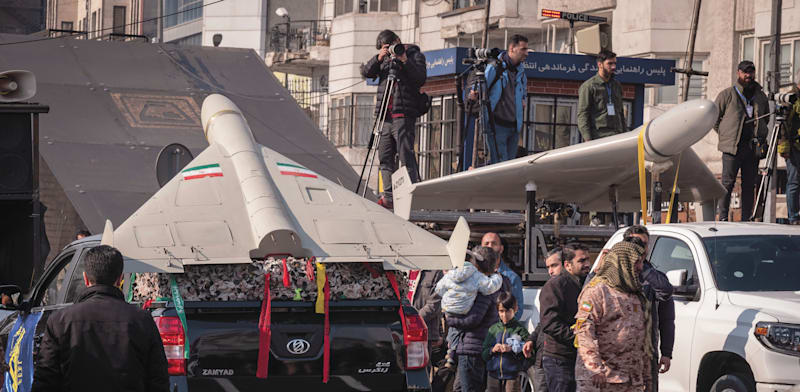Since the start of Israel’s operation against Iran, the Iranian have fired 500 ballistic missiles and more than 1,000 suicide drones (loitering munitions) at Israel. The drones are used by the Iranians to inflict damage themselves but also to try and overload Israel’s air defense systems in combined attacks.
Unlike the operation against Hezbollah, in which it was clear that Israel was having difficulty in dealing with the threat of drones – in the war against Iran, Israel seems to now know what is required. Loitering munitions have unique challenges that are not typical of air defense against missiles and rockets. To this end, Israel operates the Arrow 3, Arrow 2, David’s Sling and Iron Dome, which can only provide a partial response against drones.
The same drones have been flying from Ukraine to Russia and vice versa since Russian President Vladimir Putin’s decision to invade Ukraine in February 2022, turning that war into a kind of “testing ground” for the industry. In October 2023, the Ukrainians were in a better position than Israel in this area, but today Israel manages to achieve interception rates that are no less than those of the Ukrainians and even exceed them.
The way to deal with them is different
The challenges of assault drones are unique. First and foremost, it evades radar. The ability to receive a radar signal from the drone is low, partly due to its small size and its ability to fly at low altitudes where radar is less effective. In addition, the Iranians produce the UAVs from composite materials, which they paint in shades of gray-black. The connection between the composition of the materials and the color causes low reflection of radar waves, and even their absorption.
Israel and Ukraine have something in common in terms of the type of UAVs that are used against them. Russia relies on Iranian UAV technologies in general and the Shahed 136 in particular. Throughout the war, the Russians have even developed independent drone production capabilities, which allowed them on the night between Sunday and Monday, for example, to launch more than 350 drones towards Kiev. The combination of the quantity and the shared border between the countries meant that although the Ukrainians intercepted the majority, there were still hits in the center of the capital.
In contrast, in Israel, drone strikes and most of the alerts have been concentrated on the eastern border, from the Golan Heights to Eilat. This indicates early stage capabilities of identification, detection, and interception, even outside the country. Within this framework, helicopters and fighter jets are deployed, among other things. This creates a situation in which dealing with drones is much more expensive than they are worth. A Python air-to-air missile may cost about $500,000, compared to the $30,000 that a Shahed 136 costs. The cost of an Iron Dome interception miissile is equal to the cost of a Shahed 136, but it is a system that suffers from limitations compared to UAVs.
RELATED ARTICLES
Dr. Yehoshua Kalisky, a senior researcher at Tel Aviv University’s Institute for National Security Studies (INSS), explains that while a rocket moves on a predetermined ballistic trajectory, an Iron Dome is built for it, and in this way it is possible to calculate where you want to carry out the strike – “A drone is a loitering munition without a fixed trajectory, and therefore you need a sophisticated tracking system to hit it.”
Iron Dome is expected to be operationally reinforced starting in the last quarter of this year by the air defense system using the Iron Beam laser. Both systems will be operated from the same control vehicle, with Iron Dome designed for ranges of 40 kilometers, while Iron Beam is designed for a range of up to 10 kilometers, using a powerful laser beam with a power of about 100 kilowatts.
Effective, despite its disadvantages
Laser technology is not perfect, and a major challenge in it is its latency: the degree to which the beam weakens as it moves away from the launcher. Cloudy weather, fog, or mist also limit the laser’s activity and lower its effectiveness, and it also works in a column and moves from target to target. This means that against a swarm of UAVs, for example, it will be able to intercept only one UAV. The essential advantage is the negligible cost of interception: about $5-10. Therefore, combining it with machine gun fire may provide a significant response for drones.
“The laser needs a dwelling time on the target to ‘cook’ it, if it hits,” notes Dr. Kalisky. “The required dwelling time depends on the material the UAV is made of. The structure of the material is important due to physical parameters.”
Finally, the power of the laser beam is particularly important. While the world uses systems with a power of 20 kilowatts, Iron Beam is expected to be five times more powerful. “A 100 kilowatt laser, I estimate, would cause mechanical failure very quickly. In lower-power systems, it requires a few seconds.”
Published by Globes, Israel business news – en.globes.co.il – on June 23, 2025.
© Copyright of Globes Publisher Itonut (1983) Ltd., 2025.








